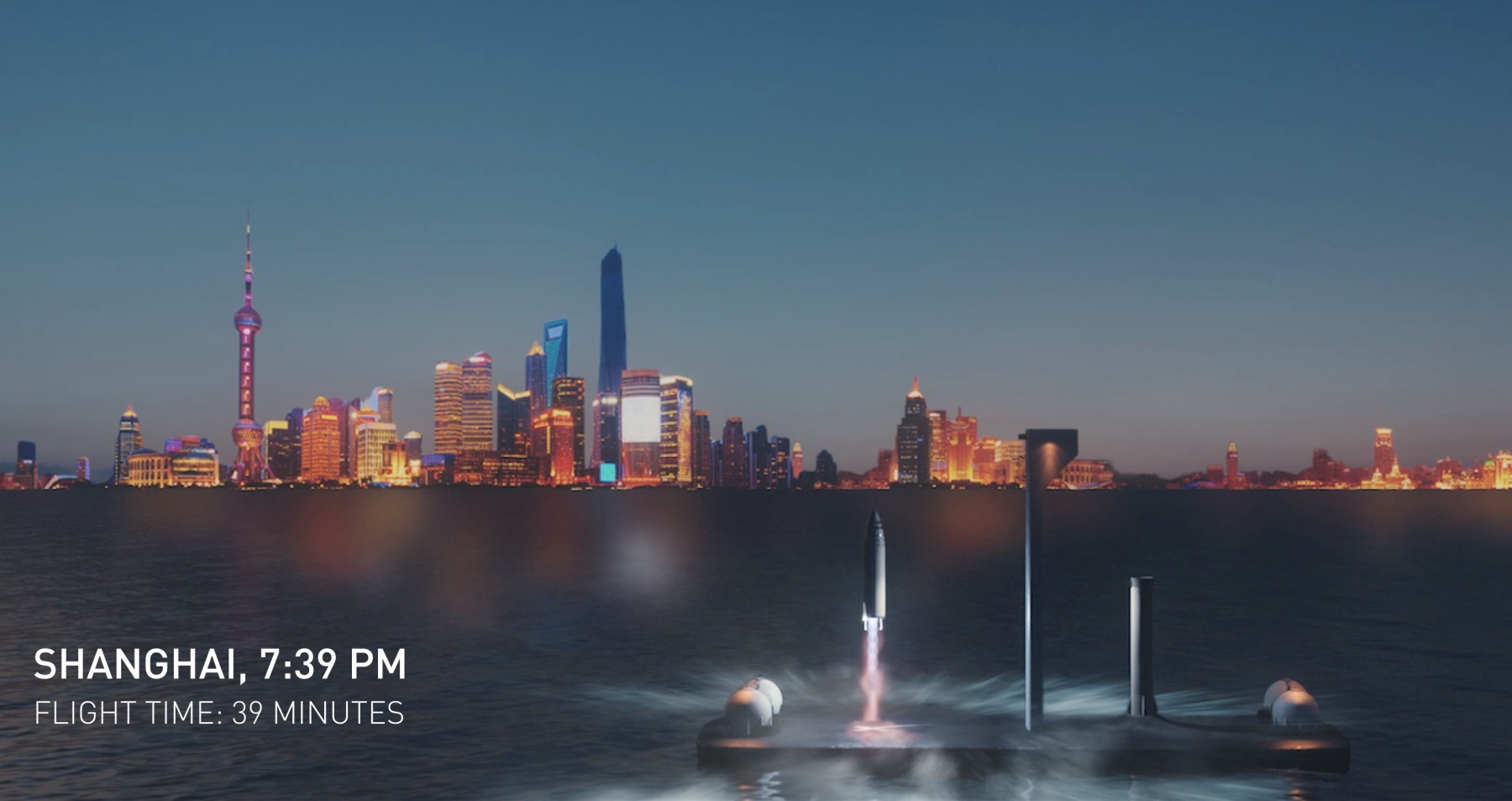Going Suborbital

How do people get around 100 years from now?
- Future transportation demands higher speeds.
- Higher speeds lead to higher drag and louder sonic booms
- Solving the boom and drag problem lead to the same solution: higher altitude
- In the limit, this looks like starship suborbital
- Orbital-class rockets are a suboptimal solution:
- Can't take off from existing airports
- Require multiple stages (complexity)
- Don't make use of air breathing engines (efficiency)
The obvious end point we want to end up at is a plane that takes off from a runway, does a steep climb into a suborbital ballistic arc, re-enter, and land at the destination's runway.
Spaceplanes Suck!
There's a long and storied history of companies and governments trying and failing to build spaceplanes. Most of them fail due to either the difficulty of building a hybrid turbofan-ramjet-rocket engine, or fighting the rocket equation. Of course, if you want to go to space, staging helps massively.
So how do we overcome those challenges?
Hybrid engines
We need to breath air, because airbreathing engines are insanely efficient compared to rocket engines:

So we need to air-breath in turbofan form, then transition to a ramjet, then kick on the rocket. On the landing side, we shouldn't need any propulsion and should land purely through gliding, like the space shuttle.
Energy density
Chemical propulsion isn't very energy dense. Even the more dense types of fuel like hydrogen don't really get you much more performance (480s isp with horrible volumetric energy density). Rockets solve this by being massive and staged. We don't want to do that without the cost per flight skyrocketting.
Thrust
Assuming the energy density problem is solved, the human body can withstand over 10 G (98m/s^2), albiet not comfortable. Realistically the maximum force acceptible will be somewhere in the 1-2 G range. With that acceleration for half of the ballistic arc, a trip from New York to LA would take 30-45 minutes.
Easy peasy.
Fusion
This post can be concluded by designing a tenative system based around using jet fuel to drive the turbo-ramjet in atmosphere and using cryogenic hydrolox or methalox rocket engines, an on-board fusion reactor can help us out immensely.
Using a miniaturized version of a reactor like Helion's field-reversed configuration reactor would allow us to do (mostly)aneutronic fusion on-board. We can take the heat generated by the reactor and, through a heat exchanger, use it as the Brayton-cycle heat source of a turbofan / ramjet engine.
Once we're out of the atmosphere, the heat exchanger will shut off and, using direct energy conversion, we'll switch to primarily generating electricity. This electricity can be used to ionize and accelerate inert gas such as in the VASIMIR engine.
Another alternative (though possibly trickier) is to alter the magnetic bottle of the reactor to direct the charged plasma out of the plane, resulting in directional thrust. This would result in something like the Direct Fusion Drive approach.
The only fuel consumed would be inert gas (refuelable before takeoff) and miniscule amounts of deuterium.
Door-to-Door
The actual metric we want to measure is door-to-door time. How long does it take to go from your actual start point to your actual destination. There's actually lots of gains to get by optimizing systems outside of the main transportation mode. For instance, trains are commonly faster than planes for trips less than 500 miles, whereas cars would be faster than trains for anything less than 75 miles, despite planes being much faster than trains being much faster than cars. The minutia of travelling to a station (or airport), going through some type of security, checking in, boarding, and waiting to leave mean that mass transport has an overhead that needs to be compensated for by the raw speed of the transportation.
Fortunately there are many good ways to cut this overhead. New CT scanners in airports, like the Analogic ones installed at my home AUS airport have already drastically cut security wait times by allowing bags to be scanned without being unpacked. It's an unsexy solution, but these scanners have materially impacted my door-to-door travel time more than any new turbofan technology.

Improving on this to the point where millimeter-wave scanners can penetrate luggage and ML models can analyze the scanned data in milliseconds should provide an expeirence not much different from high-speed tolling on interstate, where travellers can simply walk through a 20ft wide gate without breaking stride.
Better security processes, along with multiple plane boarding entrances (at least 3!) should cut the time from airport arrival to takeoff down to under 10 minutes. Similar gains should be realized on the deplaning side.
These improvements aren't just nice-to-haves, they'll likely be vital if we want faster plane speeds. The higher speed we want to travel, the more disruptive layovers will become. Increasingly airlines are optimizing for more point-to-point routes and less hub-and-spoke routes, which has unfortunately brought on the imminent demise of jumbos like the 747 and A380. If planes get smaller and passenger counts rise, the throughput of airports processing planes must rise dramatically. Rather than conduct expensive and impractical expansions to all major airports, increasing the boarding and deplaning efficiency of existing infrastructure should permite this increased throughput.